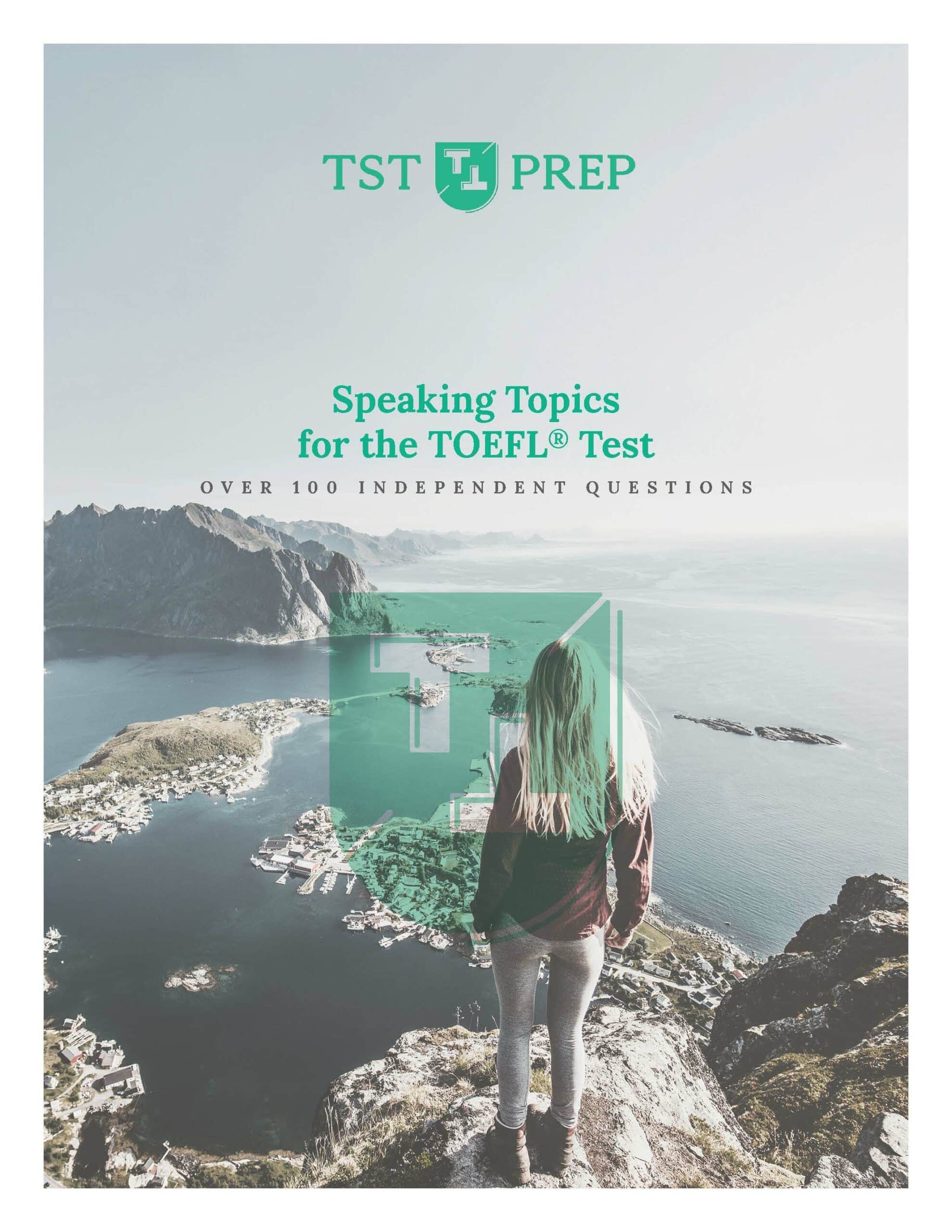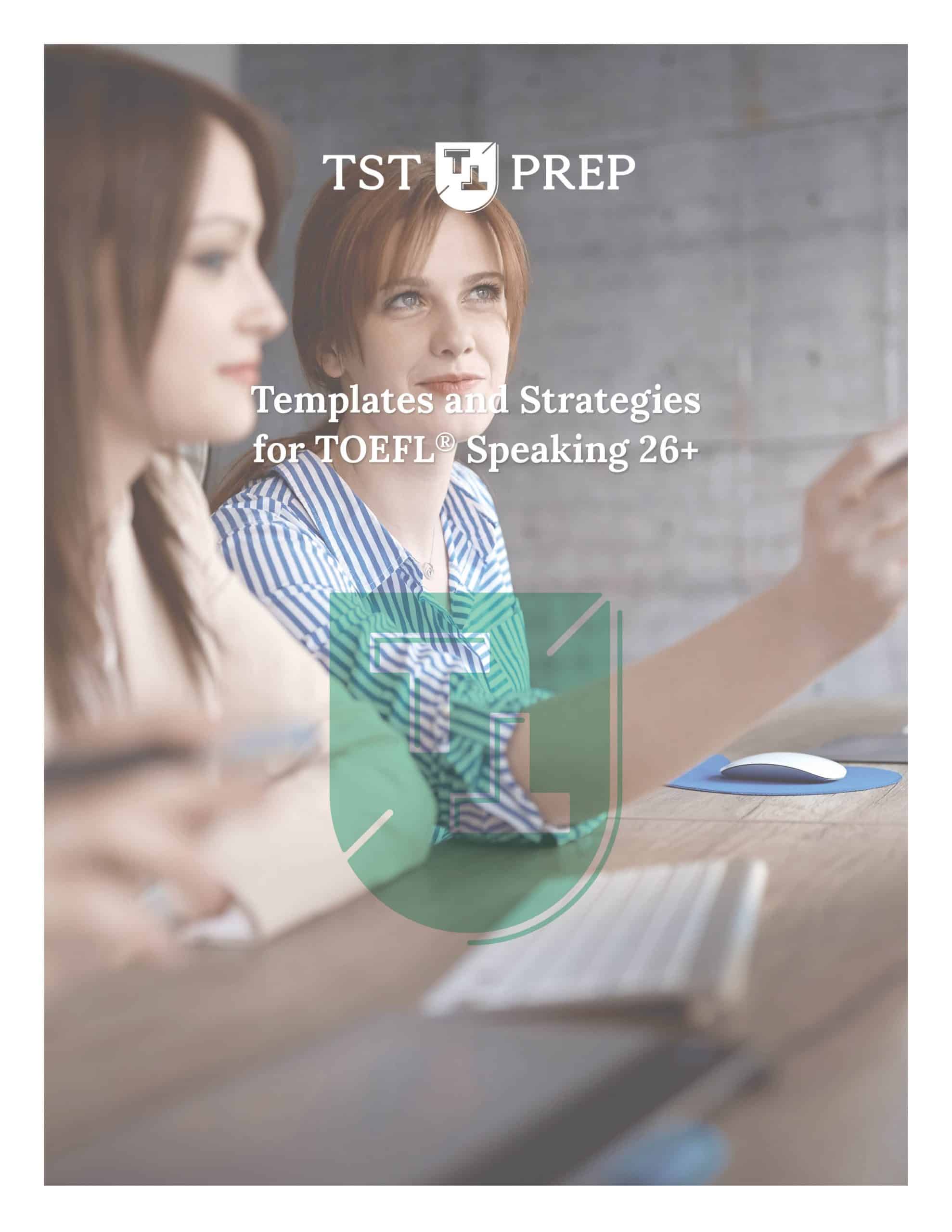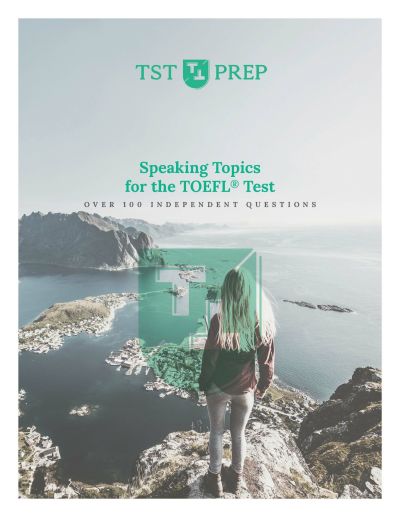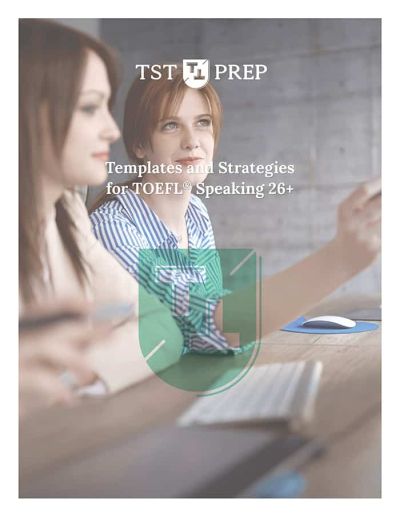Now it’s time to move on to the integrated part of the TOEFL Speaking section, starting with question two.
TOEFL Speaking question two has three parts.
- You will have 50 seconds to read either an announcement or letter to a campus newspaper talking about a change to the university’s policies.
- You will then listen to a recording between 60-90 seconds of two students discussing the change. One student will express a strong opinion either for or against it and reasons why. This is the student you need to pay attention to.
- After the reading and listening passages, you will be asked to explain why the student from the recording agrees or disagrees with the change.
You will have 30 seconds to prepare your response and 60 seconds to speak.
HOW DO WE ANSWER THIS?
You are probably thinking:
“How am I supposed to fit all this information in a 60-second-response?”
And how the heck can I plan it all in 30 seconds!
Here’s how:
- Read the passage and take notes fast – Your notes will help when it is time to answer the question.
- Listen for the counterpoints – The listening passage will most likely disagree with the change from the reading.
- Plan your response like a pro – You only have 30 seconds to prepare. This is how you do it.
- How to give a high-scoring response – The most important consideration in all TOEFL Speaking responses is to sound comfortable and natural while you speak.
- Listen to a real TOEFL student’s response – One of the best ways to learn is to hear examples from others.
- Create an easy-to-remember template – We have a wide range of words and phrases for you to use on test day no matter what the topic.
The library is in desperate need of more staff. The librarians are so overworked and exhausted. They have to run around tired trying to help students, and everyone ends up waiting an extremely long time. The library gets backed-up and no one wins. Even though there are some student workers, they are not much use. They don’t know what they’re doing, so the librarians have to do all the work. The school should hire some more professional librarians to assist our busy and crowded library as soon as possible. Remember everyone, finals are just around the corner, and we need a functioning library before then!
Sincerely,
Tamara Schull
Tip #1: Read the passage and take notes fast
Remember, as mentioned above, write down the main argument and supporting details in as few words as possible.
Let’s take a quick look at the structure of TOEFL Speaking question two.
| Reading | Listening |
| (Main idea) More Librarians needed |
|
| (Supporting detail 1) Librarians overworked |
|
| (Supporting detail 2) Student librarians useless |
Notice I barely had to write anything, but the structure of my response is beginning to take shape.
Tip #2: Listen for the counterpoints
Now let’s listen to the students talking about the letter.
Listen carefully for the student who does most of the talking to disagree with the reasons mentioned in the reading. These are called the counterpoints.
After you listen, you can check out the transcript below. I have highlighted some of the important parts.
| Reading | Listening |
| More Librarians needed | Library good |
| Librarians overworked | Only busy 1 hr, can come later |
| Student librarians useless | Student librarians great; know more than real lib |
Do not worry about spelling or writing complete sentences in your notes.
Pro tip: Sometimes, the speaker agrees with the change. If this happens, simply write down the reasons why he/she agrees and use those instead.
Tip #3: Plan your response like a pro
After the listening, you will see this screen
Now answer the question.
The man expresses his opinion on the increase in library staff. State his opinion and explain the reasons he gives for holding that opinion.
Preparation Time: 30 seconds
Response Time: 60 seconds
Planning your response should be easy. Just number your notes, and presto, you have talking points.
| Reading | Listening |
| 1. More Librarians needed | 4. Library good |
| 2. Librarians overworked | 5. Only busy 1 hr, can come later |
| 3. Student librarians useless | 6. Student librarians great; know more than real lib |
- Letter says uni needs more librarians
- librarians overworked
- librarians useless
- man disagrees, says library good
- Only busy 1 hr
- Student librarians awesome
Tip #4: How to give a high-scoring response
After your 30 seconds to prepare, you will have 60 seconds to present your amazing response. Here are some tips to help you:
- Be casual – The TOEFL Speaking exam is testing if you feel comfortable and confident while speaking English, so you should sound as natural as possible.
- Imagine you are a reporter and have to explain this story to people who do not know anything about this topic. Start from the beginning and progress in a smooth and logical manner.
- Don’t read your notes! This is why we advise only writing a few words and phrases so you don’t spend all your time staring down at your paper. If your head is down, you lose your natural intonation and this will kill your score. Your head should be up at all times.
- Don’t give your opinion! Remember you are only reporting on what the announcement/letter said and if the student agreed or disagreed and why. You should never find yourself saying the words “ I think,” or “In my opinion,” on this question.
Pro tip: If time management is an issue, you can always skip the supporting details in the reading because they will be indirectly covered when you explain why the student from the listening agrees or disagrees.
Tip #5: Listen to a high-scoring sample response
Now take a look at a high-scoring sample response to this question:
The student’s letter proposes an increased amount of staff working at the library. In it, the author notes that the library is too busy. She feels that the librarians are overworked and that the student workers do not have the necessary qualifications to help students. In response, the man in the conversation totally disagrees with the author. To start, he explains that the library is not busy most of the time. In fact, it is almost always empty. He says that it is only busy for an hour right after class. Secondly, he has talked with some of the student workers in the library, and he feels that they actually know more than the librarians. As you can see, the man clearly does not believe that the school needs to hire more librarians.
See how natural and casual she sounds? This is how you want to deliver your answers on test day.
Tip #6: Create an easy-to-remember template
While it is true you won’t know the passages you will get on test day for TOEFL Speaking question two, but there are still several key phrases you should commit to memory.
- Introductory phrases
- Transitional phrases
- Agree or disagree phrase
- Concluding phrase
Introductory phrases:
I always use one of two opening phrases. If the reading is an announcement, which happens 70% of the time, I open with
“The university announces plans to………..”
If the reading is a letter to the campus newspaper, I open with
“The student in the letter proposes to the university that……”
Knowing how to start is key, especially for test-takers who struggle with anxiety.
Transitional phrases:
Transitional phrases connect ideas and provide you with time to think. Here are a few common ones you can use for TOEFL Speaking question two:
- Firstly,
- Secondly,
- Also,
- This is because
- He/she argues that
- Additionally,
- Moreover
And many more! Always use these when you are introducing new supporting details.
Agree or disagree phrase:
Here are a few phrases you can use, depending on whether or not the speaker in the listening agrees or disagrees:
(disagrees) → “However, the man/woman completely disagrees with this plan.”
(agrees) → “In fact, the man/women completely support this idea.”
Concluding phrase:
Although not officially necessary, you could include a conclusion in the last few seconds of your response to TOEFL Speaking question two.
Keep it short and sweet.
“That is why the student agrees/disagrees with the announcement/letter.”
“As you can see, the man/woman clearly agrees/disagrees…”
Basic Template: Question 2 |
||
|---|---|---|
| Template | Content | Time |
| The reading passage (announces a change on campus/proposes a change to campus policy). In particular... (state the change or proposal). |
|
0-15 Seconds |
| The man/woman in the conversation is (in favor of/against) this idea. To start he/she says that.. (explain the lot reason for their stance). |
|
16-35 Seconds |
| Secondly, he/she explains that (describe the 2nd reason for their stance) |
|
36 - 54 seconds |
| As you can see, the man/woman in the listening clearly agrees/disagrees with this plan. |
|
55 - 60 seconds |
Here is the sample response with some of these important words and phrases highlighted:
The student’s letter proposes an increased amount of staff working at the library. In it, the author notes that the library is too busy. She feels that the librarians are overworked and that the student workers do not have the necessary qualifications to help students. In response, the man in the conversation totally disagrees with the author. To start, he explains that the library is not busy most of the time. In fact, it is almost always empty. He says that it is only busy for an hour right after class. Secondly, he has talked with some of the student workers in the library, and he feels that they actually know more than the librarians. As you can see, the man clearly does not believe that the school needs to hire more librarians.
And if you are more of a video person (I certainly am!) you can watch this video guide to TOEFL Speaking question two.
Conclusion
Phew, you made it to the end!
So, let’s recap:
- Read the passage and take notes fast – Your notes will help when it is time to answer the question.
- Listen for the counterpoints – The listening passage will most likely disagree with the change from the reading.
- Plan your response like a pro – You only have 30 seconds to prepare. This is how you do it.
- How to give a high-scoring response – The most important consideration in all TOEFL Speaking responses is to sound comfortable and natural while you speak.
- Listen to a real TOEFL student’s response – One of the best ways to learn is to hear examples from others.
- Create an easy-to-remember template – We have a wide range of words and phrases for you to use on test day no matter what the topic.
Ready to take a closer look at TOEFL Speaking Question 3?
Get access to your Templates and Strategies for TOEFL Speaking 26+ guide so you can learn exactly how to answer each TOEFL Speaking question.
Did you find this guide helpful? Do you have any questions that don’t have an answer here? Let us know in the comments section below.













8 Comments
Syed Sadiq
SUPERB I NEED 26 I APPEARED 3 TIME BUT I WILL NOT BE ABLE TO GET
Josh
Sorry to hear that syed. Let me know if there is any way I can help.
Ahmed Wasif
Thank you so much for your help. I just got my score and I got 104 in the TOEFL iBT exam. Reading 26, listening 25, speaking 27, and writing 26. I had some issues with the speaking section but the speaking evaluation session from you guys really helped me. For that, special thanks to Todd who did my evaluation and gave me some good tips that helped me in the exam. I followed your YouTube channel throughout my prep, especially for speaking and writing. Thanks again!!!!!!!
Josh
Hi Ahmed, thank you for sharing the good news, and congrats on your score! I will be sure to pass on the news to Todd. Where to next? Always happy to help a student move on to the next stage of their life!
Elaheh
Hello dear Josh,
Thank you for the all brilliant tips you offered for free.
Actually, I have a question regarding the question 2 of the speaking part. I faced something odd while I was listening to the conversation related to the question. A woman in the conversation was against the first part of the announcement and was in favor of the second part of it! Under this circumstance, what should I say as the introduction?
Your kind response will be appreciated.
Josh
Hi there and thank you for the question. That’s interesting. Was this on an official test or on an independent website? I would be curious to know if they used this all the real test. Anyway, I would use the phrase “mixed feelings”. For example, “The woman in the conversation has mixed feelings about the change mentioned in the announcement…” On the one hand…” “On the other hand…”
I hope that answers your question.
Uldouz
Hi Josh,
Thanks a lot for sharing such useful information. I have a question: is it necessary to address the reasons stated in the passage in our answer?
Josh
Great question. It’s optional. I usually advise students to just state the announcement in the passage and then move on directly to the speakers in the listening passage because you will naturally bring up the reasons for the change on campus when talking about their opinions.